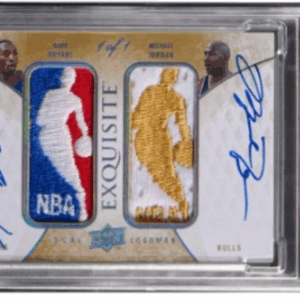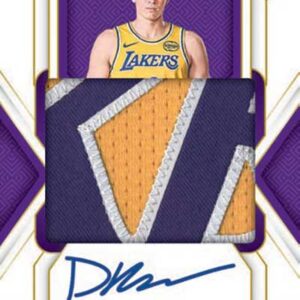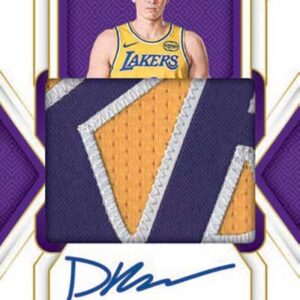In the world of sports card collecting, Ken Griffey Jr. is akin to royalty. Blessed with a swing as smooth as Sinatra’s voice and the kind of universal charisma that could charm a room full of skeptics, Griffey quickly became a darling of the baseball card community. From the moment he smashed onto the Major League Baseball scene in 1989, Platinum in hand, Ken Griffey Jr.’s baseball cards have been coveted treasures for enthusiasts across generations.
His impressive collection spans over 25,000 different cards, running the gamut from the neon-soaked late ’80s and beefy ’90s to today’s cutting-edge high-end releases. Some of these cards are permanent fixtures in any self-respecting hobbyist’s collection, while others are so elusive that they might as well have been forged from unicorn horns. For aspiring collectors or ardent fans, understanding the holy grails of Griffey’s card catalog can be both enlightening and inspiring.
Starting this illustrious list at number ten is the 1998 Metal Universe Precious Metal Gems card, an item that ignited the hobby scene with its revolutionary parallel set. PMGs were as trailblazing then as hypothesis-testing is in scientific research today. Limited to just 50 hand-numbered copies, Griffey’s PMG represents not just monetary value but a climactic peak in card-making history. At a cool $54,000 for a graded specimen, this card is not just a purchase but an indulgence in collecting’s luxury line.
The 1993 Finest Refractors card stands as a crucial piece, coming in at number nine. It rolls out the chrome carpet for the future, being the keystone for the era of the Refractor. With an intimate print run of only 241, owning this card is akin to holding a nugget of collecting folklore. The shimmer of Griffey in a refracted light paved the way for a multitude of variants that followed, becoming a shining becon in Topps’ card-making legacy.
Sitting confidently at number eight is the 1998 SP Authentic Chirography card, demonstrating that sometimes, less is absolutely more. Sporting a minimalist design paired with Griffey’s on-card autograph, this gem, limited to just 400, highlights the elegance of simplicity. The striking contrast of a clean card with Griffey’s signature, coupled with that iconic backward cap pose, resonates with pure fan love, a card that is not merely collected but adored.
Number seven belongs to the 1999 Upper Deck Game Jersey Autograph, an avant-garde artifact from the early days of game-used jersey cards. Hand-numbered to 24 copies, this card showcases the genesis of memorabilia integration within cards. Collectors treasure this item not just for its scarcity but for its historical significance, a piece that marks the dawn of the fusion between sports and tangible relics.
The standard bearer for rookie cards, the 1989 Topps Traded Tiffany card, graces us in sixth position. While easily confused with its commonplace cousin, the Tiffany version is a rare jewel, its gloss and high-grade cardstock elevating its status. Limited to a mere 15,000 factory-set copies, it stands as a gateway into an era where cards were polished like heirlooms, presenting a glittering visage of young Griffey to the world.
In fifth place is a card of legendary mystique, the 1997 Flair Showcase Masterpieces. With several 1/1 variations, it remains both a grail and a captivating mystery. Like a literary cliffhanger, its precise whereabouts are elusive, tantalizing collectors with what could be, and inspiring the idea of exclusivity that fuels todays’ one-of-one chase.
Carrying dual signatures of epic marvel, the 1994 Upper Deck Ken Griffey Jr./Mickey Mantle Autograph takes the fourth spot. This card united two titans in a harmonious pairing that collects dreams— limited to 1,000. In the realm of grail cards, it’s a partnership that melds eras, maintaining a desirability as sublime as the legends it depicts.
Sliding into third place with game-worn swagger is the 1997 Upper Deck Game Jersey. Ushering in a true revolution, it altered the landscape of card memorabilia forever, showcasing feasibility of integrating actual game memorabilia. With a rare pull rate, collectors see it as a regal predecessor to today’s vast relic card realm.
Second to none except the top card, the 1989 Bowman Tiffany appears as an understated giant at number two. A model of minimalist brilliance and scarcity with just 6,000 sets, it quietly sidesteps its flashier contemporaries with its unmatched authenticity and rarity, offering the die-hard collector a portal back to Griffey’s nascent days.
Finally, reigning supreme in countless collections globally is the indomitable 1989 Upper Deck Rookie Card. This isn’t just a card; it’s a cornerstone of collecting culture. When Upper Deck burst onto the scene, they made a trenchant statement with card #1, making the Griffey rookie card a beacon of a new dawn. Pristine graded versions unfailingly fetch upwards of $2,000, a testament to its timeless allure.
Ken Griffey Jr.’s cards are more than just collectibles; they are artifacts of baseball lore, traces of talent encapsulated in cardboard. Each card tells a part of the story of one of baseball’s most cherished heroes, and owning even one is to hold a snippet of history itself. Whether it’s autographs, groundbreaking inserts, or iconic rookie cards, a Griffey remains the golden ticket, a cherished whisper of nostalgia melded with the invincible appeal of The Kid.






